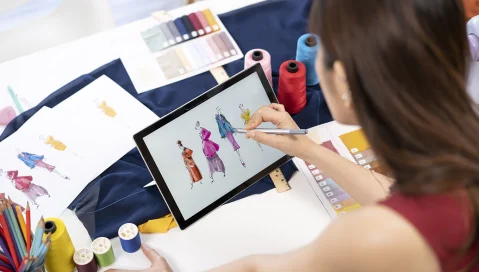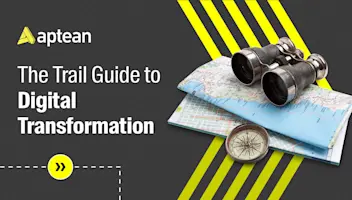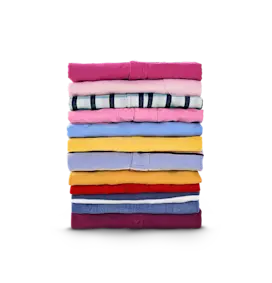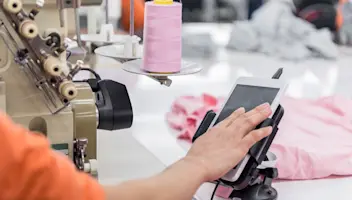Uitgelicht in deze blog
How Fashion Software Helps You Tame Supply Chain Complexity
How Fashion Software Helps You Tame Supply Chain Complexity
21 Dec 2022
Aptean Staff Writer
The current supply chain introduces significant complexity into the management of fashion and home goods brands. Sourcing for labor, manufacturing facilities, textiles and other raw materials stretches the supply chain of most apparel brands around the world and back again. At the same time, changing consumer demands and expectations require brands to bring a greater variety of products to an increasingly crowded market faster than ever before—and to deliver them through many more channels.
An inefficient supply chain—or, poor visibility into supply chain stages—can make the difference between growing profitability or business failure. Unfortunately, all too many fashion brands and retailers rely on inefficient manual tracking and spreadsheets to try to keep their supply chains moving. Lacking real-time information about designs, products, orders, suppliers, work in progress, inventory and more, decision-makers lack the forward vision required to navigate around supply chain hazards and deliver on time and on budget.
So what's the answer to tackling this ever growing list of challenges? In a word: technology. To remain competitive in this era of fast fashion and complex supply chains you must leverage a range of fashion software to increase efficiency and visibility throughout your supply chain.
But figuring out where to start when there are so many options on the market can be daunting, especially when you're busy trying to contend with all those challenges we just listed. So, to help set you on the right path, this guide walks through the risks in each stage of your fashion supply chain and then lays out the available software solutions to smooth those complexities and eliminate your most common headaches. Let's dive in and get you on your way to a hassle free fashion supply chain.
Five Stages of the Fashion Supply Chain
The supply chain for fashion brands and retailers can be broadly divided into five stages. Good execution is needed at each stage in order to design the products that consumers want and ensure their timely delivery to market, but if processes breakdown, significant business risks awaits.
Identifying these risks helps us establish where different pieces of the fashion software puzzle are required and which benefits they can deliver to your apparel manufacturing and retail business.
Stage 1: Design & Materials Management
As you know well, each of your clothing designs must reflect the latest trends and get to market as quickly as possible before the next big shift in styles. To accomplish this, it's critical to maintain an efficient process for designing clothing, selecting materials and managing each product’s lifecycle.
Risks: An inefficient design process slows time-to-market for new products. If competitors get there first, your fashion brand risks getting stuck with excess inventory that won’t sell.
Stage 2: Procurement & Manufacturing
Once the design of a new style has been completed, it’s time to source vendors and procure the materials needed for manufacturing, including textiles, thread, embellishments and closures. Your goal is to find the highest quality materials produced by very reliable vendors at the best prices. After procurement, products move into manufacturing—either in-house or through third-party manufacturers.
Risks: Trouble navigating around logistical problems (natural disasters, geo-political instability, etc.). If your business lacks real-time visibility, sourcing flexibility and solid vendor communication processes these issues can lead to production stoppages, delays in order fulfillment and increased supply chain costs.
Stage 3: Warehouse & Fulfillment
After manufacturing, finished products will be received at one or more warehouses that may be operated by your fashion brand or a third-party logistics (3PL) operation. When goods come into the warehouse, they need to be accurately identified, counted and put away in the right location. It’s also essential that you have real-time visibility into all of the inventory you have in stock.
Risks: Inaccurate inventory counts could prevent or delay the timely fulfillment of orders. Misplaced stock might sit in the warehouse, increasing costs while missing the market.
Stage 4: Distribution
When it's time to fulfill orders for retailers, warehouse workers need to be directed to the right locations to pick the correct items in the correct quantity. Items and orders need to be labeled and shipped according to retailer requirements.
Risks: If fashion brands and retailers aren’t able to communicate with accuracy about orders, expectations will be missed. The largest retailers won’t continue to order from brands that lack automation and real-time visibility. If shipments aren’t correct, retailers may issue costly chargebacks.
Stage 5: Repairs & Returns
Defective products or those products that have reached their end of lifetime will be returned. Managing the returns stage of the supply chain requires working with partners and retailers to identify condition, authorize returns, schedule shipments and issue refunds.
Risks: Inefficient processes or insufficient data could lead to lacking quality, higher chargebacks and customer dissatisfaction.
Changing Customer Expectations are Reshaping the Fashion Industry Supply Chain
Today’s consumers want the fashion-forward apparel and the latest home designs available to them when they want, in the product mix they want and through whatever channels they want. They want faster delivery of better products at cheaper prices.
On top of all of this, consumers, environmental organizations and government agencies are paying careful attention to sustainability: how brands source materials, ensure good labor conditions and reduce waste throughout the supply chain.
The only way to deliver on such high expectations is to have all stakeholders and supply chain partners working together efficiently and sharing information as seamlessly as possible. Purpose-built fashion technology is key to driving the visibility, speed and accuracy required to adapt to evolving customer demands, industry regulations and a changing competitive landscape.
Satisfy Customers and Increase Profits
Retailers taking advantage of an integrated, end-to-end fashion supply chain management platform will be able meet these increasing demands of today’s fashion and soft goods consumers. Good supply chain management enables you to bring a higher quality product to market faster than ever before, with less waste and fewer returns.
Deploying the right fashion management software drives efficiency and accuracy throughout every stage of the supply chain, yielding information that helps you retain customers by offering the right products at the right time for a superior customer experience. This is a recipe for maximizing top line growth while reducing overhead—leading to stronger profitability.
Fashion PLM software compresses the time needed for design and product development by about 35%.
Seven Fashion Software Solutions To Improve Your Supply Chain
Having an integrated technology platform brings together information about customers, orders, products, vendors and inventory that helps you achieve real-time visibility throughout your entire supply chain. Being able to have all of these types of information available—in real-time—to company decision makers is the key to running a profitable and competitive business in the apparel and soft goods industry. A fully digital concept-to-consumer supply chain management platform enables fashion companies like yours to:
Gain end-to-end supply chain visibility
Improve collaboration with vendors
Increase flexibility in sourcing options
Reduce cost and overruns
Compress manufacturing timelines
Optimize inventory control
Accelerate product development
Improve quality, reducing returns
While many of today’s headlines focus on “last-mile” innovation—such as drones to complete same day deliveries—the biggest impacts to consumer satisfaction and corporate efficiency come from more foundational improvements like real-time stock visibility and advanced data analytics.
Let’s look at the most fundamental pieces of integrated fashion supply chain technology that can empower you to meet consumer demands more efficiently.
1. Product Lifecycle Management (PLM)
Apparel and fashion PLM software simplifies and expedites the path from concept to customer for apparel and soft goods. It helps designers create new products more easily from existing styles and quickly develop tech packs for manufacturers to follow. Product managers can model “what-if” scenarios to see how choosing different suppliers, materials, or production facilities will impact costs and delivery schedules. Overall, the best PLM software for fashion businesses compresses the time needed for design and product development by about 35%, while improving vendor communication, sourcing and costing, line management and sample tracking.
Take a look at some of our PLM resources to get started on your journey: Your Ultimate Guide to PLM Software, Building Your Business Case for a PLM System: 7 Key Benefits or Comparing PLM Systems: The Differentiators
2. Shop Floor Control (SFC)
A shop floor control system is designed to track the progress of production throughout a sewing operation. Supervisors, managers and workers all gain visibility into Work In Progress (WIP) by receiving real-time information and notifications on computers and mobile devices. Shop floor control software increases workforce productivity by up to 37%, improves product quality by up to 44% and reduces overtime by up to 72%.
For further exploration, try out our ROI savings calculator or check out our blog on the Top 4 Reasons Your Apparel Manufacturing Company Needs Shop Floor Control Software for more information.
3. Enterprise Resource Planning (ERP)
Fashion ERP software provides a centralized source of truth that helps connect other business systems for analysis and planning. Choosing the right apparel ERP helps your fashion company optimize financial management and reporting and plan for materials requirements. Specialized fashion ERP automates tracking and reporting—leading to as much as a 20% reduction in administrative labor hours.
Discover more in our full guide to ERP for fashion companies: Go From Concept to Consumer With Apparel ERP
4. Electronic Data Interchange (EDI)
EDI enables two companies to exchange information instantly about orders, payments, inventory, shipments, production orders and more. In order to ensure rapid, accurate exchange of supply chain information, most major retailers require the brands they do business with to communicate via EDI.
5. Third-Party Manufacturing (3PM)
3PM automation provides real-time visibility into the exact production stage and status of your product. This means no more searching through emails or chasing for updates about WIP. Instead, products get scanned at predetermined stages of completion, creating a current order status that’s automatically recorded and shared between manufacturer and customer.
6. Warehouse Management System (WMS)
It does no good to have new products stacked neatly in the warehouse if you don’t have an accurate, timely accounting of your inventory. A WMS offers real-time visibility into inventory levels and helps automate inbound warehouse processes such as receiving and put-away as well as picking, packing and outbound shipping of orders.
7. Vendor Portals
Retailers can achieve real-time visibility of available inventory and WIP via online fashion and apparel vendor portals. Being able to get real-time updates from contractors for both committed and consigned goods enables you to receive the best selection and timeliest products. A vendor portal that is integrated with fashion PLM software empowers earlier design and sourcing, leaving more time built into the calendar to respond to unexpected challenges and, if needed, shift purchases to other suppliers through the vendor portal.
Shop floor control software increases workforce productivity by up to 37%, improves product quality by up to 44% and reduces overtime by up to 72%
End-to-End Supply Chain Platform Designed for Fashion
By combining leading innovation in PLM, SFC, ERP, EDI, WMS, third-party manufacturing and apparel vendor portals, Aptean has created the only end-to-end, complete supply chain management platform for the fashion and soft goods industry.
Aptean’s fashion supply chain solution suite improves communication and collaboration between brands and supply chain partners including suppliers, 3PMs, warehouses and retailers. Real-time visibility across your entire supply chain helps continuously optimize operational decisions, control costs, improve agility and balance the competing demands for savings, speed and quality.
Contact us today to learn how Aptean's fashion software suite can suit your business’s needs up and down the apparel and fashion supply chain at every stage.
Related Articles


Klaar om uw bedrijf naar een hoger niveau te tillen?
We hebben gespecialiseerde ERP-oplossingen waarmee u elke uitdaging in uw branche aankunt.






